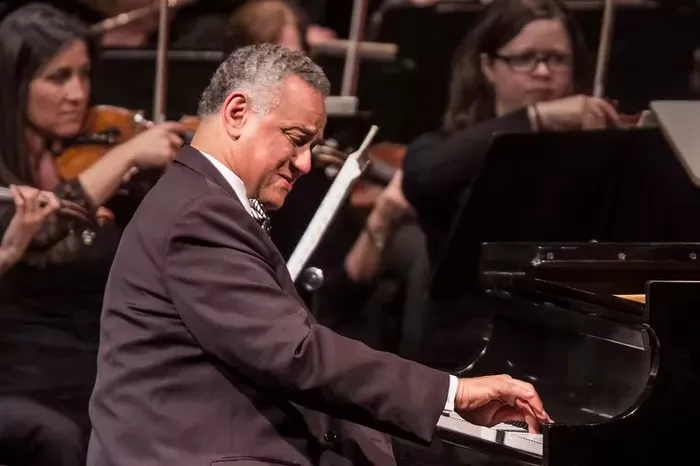Classical music and pop culture, two seemingly distinct realms of musical expression, have converged in surprising and innovative ways over the years. This harmonious intersection has not only breathed new life into classical compositions but also enriched the pop music landscape. In this article, we will explore where and how classical music has found its place within pop culture, from movies and television to advertisements and contemporary music trends.
Classical Music in Pop Culture: An Evolutionary Journey
The influence of classical music in pop culture dates back several decades. One prominent avenue through which classical music has made its mark is in the realm of film and television. Scores and soundtracks featuring classical compositions have played pivotal roles in enhancing the emotional depth and narrative impact of countless cinematic masterpieces.
In many cases, classical music has been used to underscore dramatic moments or evoke specific moods. Take, for instance, Stanley Kubrick’s masterpiece “A Clockwork Orange.” The film’s juxtaposition of Beethoven’s Ninth Symphony with scenes of violence and chaos leaves an indelible impression on the viewer, showcasing the power of classical music in pop culture.
Classical Music and Pop Culture: A Symbiotic Relationship
Pop culture’s penchant for reimagining classical compositions has breathed new life into timeless masterpieces. Remixes and adaptations of classical pieces have become a trend in contemporary pop music. These reinterpretations blend classical elements with modern beats, creating a fusion that appeals to a diverse audience.
Artists like Lindsey Stirling have gained massive popularity by infusing classical violin with electronic and pop elements, demonstrating that classical music can be reinvigorated to resonate with younger generations. In essence, classical music has found a renewed relevance within pop culture by adapting to modern tastes.
Classical Music in the Digital Age: Pop Goes the Orchestra
The digital age has ushered in new opportunities for classical music to infiltrate pop culture. Streaming platforms, such as Spotify and YouTube, have made classical compositions more accessible than ever before. Moreover, orchestras and classical musicians have embraced social media to engage with younger audiences.
Pop culture enthusiasts can now witness orchestras performing classical music in unique and captivating ways. Concerts featuring symphonies dedicated to popular culture, such as “Video Games Live,” showcase the appeal of classical music in a pop culture context. This fusion of classical compositions with contemporary themes resonates with a broad spectrum of music lovers.
Classical Music in Advertising: A Timeless Elegance
The world of advertising has also recognized the allure of classical music. Many brands use classical compositions in their commercials to evoke emotions and convey a sense of timelessness and sophistication. These advertisements often pair classical music with imagery that complements the music’s mood, effectively connecting the product or service to a broader cultural context.
For example, the use of Claude Debussy’s “Clair de Lune” in a perfume commercial enhances the product’s aura of elegance and refinement. Such strategic choices reflect the enduring appeal of classical music in pop culture.
Classical Music and Pop Culture: A Platform for Innovation
In recent years, pop culture has been a platform for innovation, fostering collaborations between classical and contemporary artists. These partnerships blur the lines between genres, resulting in captivating and genre-defying performances.
One striking example is the collaboration between the renowned pianist Lang Lang and the Grammy-winning band Metallica. Their electrifying performance of Metallica’s hit song “One” during the 2014 Grammy Awards demonstrated how classical music can seamlessly merge with the intensity of metal, captivating both classical and pop music enthusiasts.
Classical Music in Pop Culture: A Teaching Tool
Classical music’s presence in pop culture has also served as an educational tool. By incorporating classical elements into popular media, educators can introduce younger generations to the rich history and emotional depth of classical compositions.
Animated films like Disney’s “Fantasia” have introduced classical music to children in a visually captivating manner, making the music accessible and engaging. These experiences can inspire a lifelong appreciation for classical music, nurturing a new generation of enthusiasts.
Classical Music in Contemporary Pop: A Timeless Influence
The influence of classical music extends beyond the realms of film, advertising, and education. It has also left an indelible mark on contemporary pop music. Many pop artists draw inspiration from classical compositions, infusing their songs with elements of classical harmony, instrumentation, and structure.
Artists like Adele, Kanye West, and Muse have all incorporated classical elements into their music. Whether it’s the use of a symphonic orchestra, operatic vocals, or classical chord progressions, these nods to classical music add depth and sophistication to their pop hits.
Classical Music Meets Pop Culture: A Diverse Audience
One of the most remarkable aspects of classical music’s presence in pop culture is its ability to transcend generational and cultural boundaries. Classical compositions can evoke emotions and convey narratives that resonate with people from all walks of life.
Whether it’s a young listener discovering classical music through a film soundtrack or an older music enthusiast appreciating the fusion of classical and contemporary styles, the appeal of classical music in pop culture is universal. It unites people through a shared appreciation for the power and beauty of music.
Conclusion
In conclusion, classical music’s influence on pop culture is a testament to its enduring legacy. From the silver screen to streaming platforms, from advertising campaigns to innovative collaborations, classical music has carved out a permanent place in the ever-evolving landscape of pop culture.
As classical compositions continue to find new expressions and adapt to modern tastes, they remain an integral part of our cultural tapestry. Classical music in pop culture is not a fleeting trend; it is a harmonious union that continues to captivate and inspire audiences of all ages, proving that the timeless beauty of classical music will endure for generations to come.

